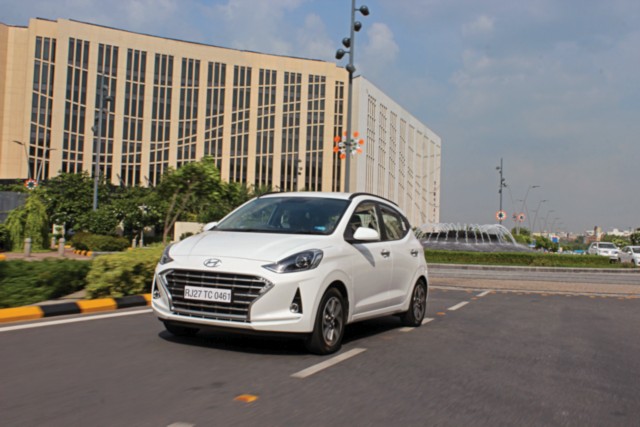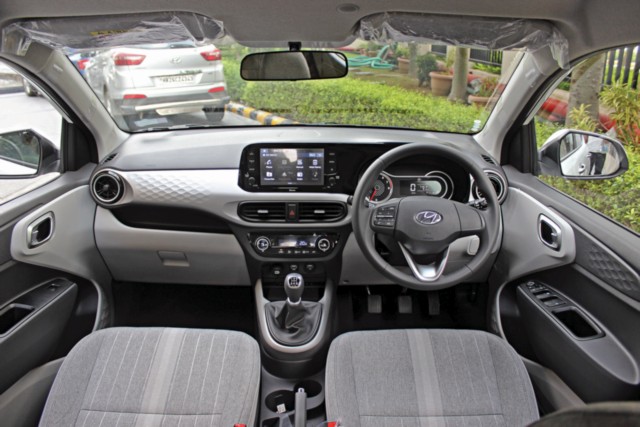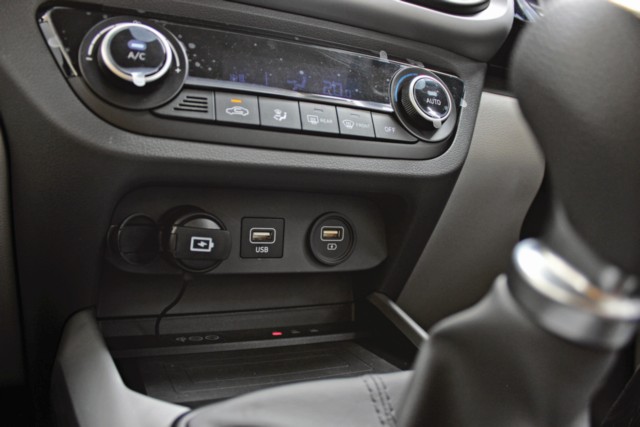The all-new Hyundai Grand i10 Nios is a fresh take on the popular hatchback and takes it into the future with a promising series of updates.

Story: Jim Gorde
Photography: Saurabh Botre
What does it take to stand out today? There are recipes for success but the ingredients used in one place may not be available or even work at all in another. How then does one deliver the goods, knowing they will be lapped up? By getting the basics right. Style and substance.
One look at the Nios and it’s clear that it’s a brand-new creation. European looks, modern design elements that mimic more premium offerings, and a selection of updated powertrains at a compelling price point all make for a delectable package. Of course, that depends on what you look for in a small car or, perhaps, even a first car. First, there was the Santro, the car that marked the arrival of Hyundai in India and went on the become a success story. Then came the Santro Xing with sunshine on its side. That was followed by the i10 which brought in the new nomenclature. Again, did well for the brand. The Grand i10 that followed showed some serious evolution on the part of the Korean major in terms of interior quality, build, ride, and handling; all of which were critical factors in making it a force to be reckoned with. So, it’s only fair to say that expectations from this new-generation Grand i10 Nios are rather high.
First, the name. “Nios” means “more”. Apt considering it reflects just that: the response to those high expectations. It brings more dimensions, more space, a lot more equipment, and more efficient powertrains, with some additional choices in the transmission.
The big changes come on the outside. The aggressive front end spearheads the new visual approach. The power-dome shape on the bonnet makes it seem like there is a V8 under there. Lower down is a large front grille which adopts the new design philosophy the brand introduced on the Santro and ― what it looks more like, actually ― the Venue. That grille is flanked by shapely projector headlamps that are akin to those offered on some premium European sport-luxury models. The boomerang-shaped daytime LED strips adhere to what seems to be the changing trend of lighting playing a more important role in styling ― and weighing in on acquisition preference for many. Diagonally below them towards the outside are the fog-lamps, located within what look like cooling air-intake slats. The silhouette, on its side, is familiar, yet slightly more.
The Grand i10 has grown 40 millimetres longer to 3,805 mm and 20 mm wider as well. It also runs a 25 mm longer wheelbase, freeing up even more passenger and cargo room. The shapely light clusters are clearly visible side-on and the wing-mirrors get integrated turn-indicators. The unique tapering of lines, including a sharply rising shoulder-line, that converge at the C-pillar is joined by “G-i10” branding. There are also black roof-rails above, and filling up the wheel-arches below are 15-inch alloy wheels wrapped in larger tyres than before: 175/60 R15s. The rear looks tight and rather familiar; reminiscent to me at least of a little home-grown hatch that I have come to adore. “Nios” badging adorns the centre of the rear, with chrome garnishing making an appearance in this segment, addressing the need for bling that some prefer.

Inside, the cabin looks, and is, extremely spacious, with some choice aesthetic touches, visible on the dashboard and reverberating in the door-panels. The upholstery, though fabric, looks like a unique mix of classy, sporty, and modern. The list of equipment, at least in this top Asta trim, is extensive and includes a new digital-analog combination driver information console that looks pretty neat and incorporates an analog rev-counter with a digital info display showing everything from the speed to the trip meters, fuel-gauge, and distance-to-empty, among other details.
The centre console’s highlight is the new 8.0-inch touchscreen with a selection of physical input options as well. It features a smartphone-like sliding menu and also brings Android Auto, Apple CarPlay, and voice recognition. Other standout features are the wireless charging pad lower down in the centre stack, apart from a pair of USB ports for both charging and media connectivity. The finish is excellent, but after what I’ve experienced thus far, the quality of some elements feels a notch lower: the stalks behind the steering wheel, the steering wheel itself, and the plastic forms on the latter section of the centre stack enveloping the handbrake lever. That said, it’s still a shade better that what some of the competition offers. The driver and front passenger space seems more than adequate. There’s enough space at the rear, too, with the a-c vents continuing to do a fine job of enhancing the ambience. Other important features to note are the smart key with push-button start that makes using the car much easier. No need to fumble for the fob. Essentials intact, then.

Two USB ports, a 12V port, and wireless charging




















Leave a Reply